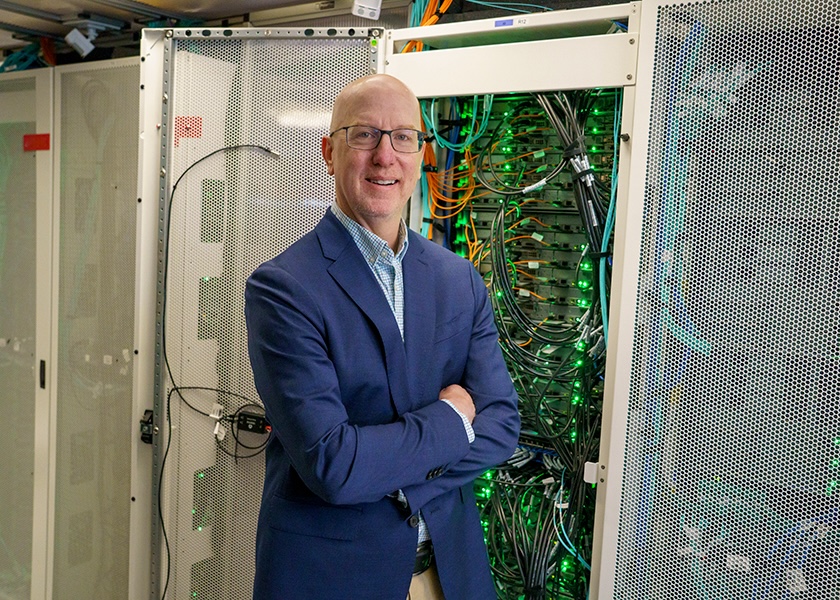The Problem
Current lithium-ion batteries rely on scarce and expensive elements like cobalt and nickel, creating sustainability and supply chain challenges.
Current lithium-ion batteries rely on scarce and expensive elements like cobalt and nickel, creating sustainability and supply chain challenges.
By systematically modeling and controlling atomic ordering in cathode materials, researchers can design high-capacity batteries using earth-abundant elements.
This approach enables more sustainable, affordable, and scalable energy storage technologies to meet rising global demand.
Professor Chris Wolverton, Postdoctoral researcher Tzu-Chen Liu
A new study from Northwestern Engineering’s Chris Wolverton, conducted in collaboration with the Toyota Research Institute (TRI) and Toyota Motor Corporation, offers a path toward more sustainable and higher-capacity lithium-ion batteries used to run smartphones, electric cars, portable chargers, and more. The research provides a blueprint for designing new cathode materials that use earth-abundant elements, helping reduce reliance on limited global mineral supplies.
The study demonstrates how controlling atomic “ordering” within a material can directly influence its performance, leading to improved energy storage without depending on costly or scarce elements.
“We’ve shown that controlling ordering tendencies, which might seem like an abstract physical concept, can have very real industrial impacts,” Wolverton said. “It can guide the use of abundant elements while maintaining the performance levels needed for next-generation batteries.”
Wolverton is Frank C. Engelhart Professor of Materials Science and Engineering at the McCormick School of Engineering. Along with his colleagues, Wolverton presented the work in the paper “Tailored Ordering Enables High-Capacity Cathode Materials,” published Oct. 7 in the academic journal Advanced Energy Materials.

The project stems from a shared goal between academic researchers and industry engineers: finding ways to design better batteries that meet rising global demand while managing supply chain risks. Cathode materials, which store and release lithium ions during battery operation, are often made with elements such as cobalt or nickel, both expensive and subject to volatile markets. By mapping how more than 32 potential elements interact and order within cathode structures, the McCormick team has built a database that allows scientists to strategically substitute rare materials with more readily available ones.
The work also offers a new framework for improving a class of materials called disordered rocksalt cathodes. These materials are seen as a leading candidate for next-generation lithium-ion batteries because they can potentially deliver twice the capacity of today’s commercial cathodes. Yet their performance depends on how atoms are locally arranged, which is a feature that has been extremely difficult to control and predict until now.
“Ordering is one of the hardest things to quantify, and it’s rarely studied systematically on the scale of thousands of compounds,” said Tzu-Chen Liu, the paper’s lead author and current postdoctoral researcher. “Our large-scale computational approach gives researchers and manufacturers a practical guide for choosing elements that will yield synthesizable, high-performance structures.”
The study required two years and millions of CPU hours of computation to build. It is one of the most extensive databases ever developed for battery materials. Using first-principles calculations — computer simulations based purely on the laws of physics — the team modeled how more than 32 elements arrange themselves, or “order,” within cathode structures. This large-scale dataset now helps researchers predict which combinations of abundant elements will form stable, high-performance materials. The insights are already shaping ongoing design efforts, and TRI has filed two non-provisional patents based on the collaboration’s findings, underscoring the work’s immediate industrial relevance.
Our large-scale computational approach gives researchers and manufacturers a practical guide for choosing elements that will yield synthesizable, high-performance structures.
“This study shows how fruitful collaboration between academia and industry can drive innovation. The decades of collective theory and experimental expertise on our teams really enabled this project,” said Steven Torrisi, senior research scientist at TRI and the lead Toyota researcher on the study. “This work is one more milestone towards having computation routinely guide the experimental discovery process in industrial research and shortening the time from discovery to development.”
The researchers’ approach stands apart from previous trends in the field. In high-entropy materials research, scientists typically mix many different elements in nearly equal amounts and assume the atoms arrange randomly, avoiding the complexity of studying their precise order. In contrast, the teams directly analyzed and modeled these ordering effects, revealing how atomic arrangement can be used as a design advantage. The result is a predictive strategy that combines data-driven computation with real-world material development.
“Our collaboration with Toyota allowed us to connect computational discovery to industrial application,” Liu said. “It’s exciting to see how these insights are already being translated into real material candidates.”
New collaborations are already building on the work. Northwestern researchers are now partnering with the group of Iwnetim Abate at MIT to further refine and test the most promising disordered rocksalt cathodes identified in the study. These materials mix atoms in a more random way than traditional cathodes, which could allow batteries to store much more energy if their atomic arrangements can be properly controlled. The joint efforts aim to verify the materials’ performance and scalability for commercial use.
“Our goal is to move from understanding to implementation,” Torrisi said. “We’re using this framework to design and test materials that can meet the world’s growing energy demands in a more sustainable way.”